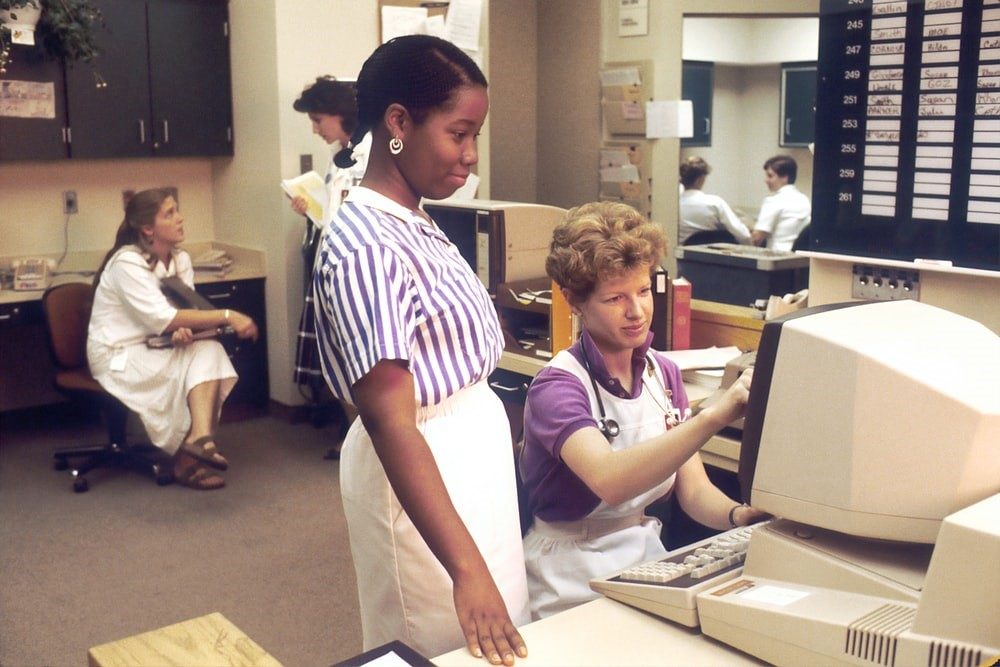If you’ve worked in a healthcare facility, chances are you’ve come across the acronym NDNQI. If you have not had any previous exposure to the acronym, you might have wondered, “What is NDNQI?” The acronym NDNQI® stands for National Database of Nursing Quality Indicators. Thus, NDNQI is a database that houses various quality measures used to track nursing-specific performance in various areas of nursing.
Nurses provide a large portion of direct care to patients. Because of this, it is essential to have measures as those in the NDNQI. This way, nurses can assess how the type and amount nurses, as well as their work environment, impacts patient outcomes.

Background
In the 1990s, organizations became aware that there was a connection between the nursing staff levels and characteristics and the quality of care and outcomes received by patients. During that time, various organizations across the nation trialed a number of research-based measures. These indicators eventually became adopted by and American Nurses Association in the year 1998 in a database called the NDNQI.1 Since then, the NDNQI has been the only national database that allows healthcare facilities to compare themselves against others down to the unit level.
For over a decade, the University of Kansas School of Nursing managed the NDNQI.1 Various healthcare facilities around the nation would send information for inclusion in the database. They would do this so in order to be able to compare their performance with peer organizations across the country. Even some international healthcare facilities have opted to participate in NDNQI.
In 2014, the American Nurse Association transferred management of NDNQI to Press Ganey.1 Press Ganey is an organization that focuses on helping healthcare organizations use data to continuously improve quality of healthcare. It has a lot of tools and advanced analytics capabilities to further assist the thousands of healthcare facilities that participate in NDNQI do more with their data.

What are the Benefits of Participating in NDNQI?
In some cases, healthcare facilities seek inclusion in NDNQI in order to be able to provide objective data that they can use to qualify for awards and recognitions. For instance, a large majority of American Nurses Credentialing Center (ANCC) Magnet designated healthcare facilities participate in the NDNQI program.2 This makes sense because NDNQI is the only national database for nurse sensitive indicators.
Apart from awards and recognition, healthcare facilities participate in NDNQI so they can gauge their performance with their peers. By doing so, healthcare facilities are able to determine where they most need to focus their efforts to become and remain competitive. Without being able to gauge their performance to their peers, healthcare facilities would be blind in terms of where they are falling behind or where they are outperforming others.
It is in every healthcare facilities’ interest to provide both their nurses and their patients with a good experience. After all, good outcomes correlated with a good nursing experience. They also correlate with more financial success for the insitution.
The fact that outcomes correlate with financial success is particularly true now that much of healthcare facilities’ compensation is tied to their patient outcomes. Given that hospital errors are so common and oftentimes avoidable, it is worth investing the time and effort necessary to carry out quality improvement strategies. Lean six sigma projects, for example, can go a long way in improving patient outcomes as well as profits.

What are Some NDNQI Indicators?
NDNQI classifies its measures into process, structure, and outcomes measures.2 Some examples of NDNQI process measures includepressure injuries, care coordination, pain impairing function, and the use of retrains. Examples of NDNQI structure measures include staffing and skill mix, nurse turnover, RN education, and RN specialty certification. NDNQI outcome measures include catheter associated urinary tract infection, central line associated blood stream infections, patient falls, pressure injuries, ventilated associated pneumonia and events.
Some of the measures are exclusively in one of these categories. Others fall under more than one of these categories. For example, patient falls is considered both a process and outcome measure.
A lot of the NDNQI measures are submitted by healthcare facilities on an ongoing basis. The healthcare facilities, in turn, are able to get quarterly reports of their data with appropriate benchmarks. Furthermore, healthcare facilities have some flexibility in terms of how to retrieve and customize their reports.
Some NDNQI measures, however, are collected only annually. The NDNQI indicators that are collected annually are those obtained via the RN practice environment or the RN job satisfaction survey. However, even though only collected annually, these surveys are central to NDNQI as they provide very valuable information.
Regardless the measure, NDNQI allows organization to benchmarks information by type of patient unit and healthcare facility types (both outpatient and acute), region, and size. It is essential to be able to be granular in how one compares healthcare data. After all, patients and nurses inevitably vary depending on the specialty and characteristics of the healthcare facility. Fortunately, with its many measures and categories, NDNQI certainly gives healthcare facilities the flexibility to compare themselves against the information they deem most appropriate to achieve their particular goals.

What is the Soundness of NDNQI Indicators?
NDNQI indicators have been heavily studied for validity and reliability.3 They are thus particularly useful when studying nursing-driven quality improvement initiatives and research. In fact, experts recognize many NDNQI indicators as nurse sensitive indicators.3 This means that nursing care directly affects these measures.
However, in order for any NDNQI measures to be reliable and valid, the healthcare facilities need apply and report them correctly. This means that participating organizations need to study the oftentimes extensive guidelines that explain how each of the different measures should be reported. Otherwise, the measures would not be very useful.
For example, it is important to understand that falls that are counted are those of patients and not of visitors. Counting visitors in one’s falls would distort the validity and reliability of the measure. It would also incorrectly and negatively affect the hospital’s apparent fall performance.
The opposite would also be true. If a hospital does not count falls that were supposed to be counted, the hospital’s fall performance would also be incorrect. It might seem good, but the hospital would not be providing as good of care as it thinks it is. In the long run, it would be tragic for both the hospital and its patients to not accurately account for qualifying falls.
Of course, as the healthcare system evolves and more research arises, it sometimes becomes apparent that new indicators might be necessary. Fortunately, the NDNQI provides a platform to trial new measures at various healthcare facilities. Depending on results, the NDNQI adopts the measures into its official list of measures. In 2017, for example, a new measure that can be used to track how assaults on RNs can impact patient outcomes.4

How do Healthcare Facilities Participate in NDNQI?
Data submitted to NDNQI is propriety, meaning the information is not available publicly. This means that healthcare facilities cannot access to benchmark information or other NDNQI features unless they members of NDNQI.
To become a member of NDNQI, healthcare facilities need to pay in order to be able to compare themselves against other organization and run reports.3 They also need to submit an application and sign a contract. The fees vary depending on the size of the organization. Larger organizations paying more than smaller organizations as they will understandably require more support.
In turn for their NDNQI membership, healthcare organizations get to see how they compare against other organizations on a national, state or regional level on a percentile basis. There are some measures where a higher percentile is better. On the other hand, there are measures where a lower percentile is better.
For example, it is good for nurses to be satisfied with their jobs. Therefore, a high score in questions related to job satisfaction would indicate good performance. On the other hand, it is bad for patients to fall. Therefore, having a high percentile in falls would indicate poor performance.
Admittedly, participation in NDNQI comes at a cost in terms of money, time, and resources. However, the cost is generally worthwhile because it gives organizations a lot of insight into their relative performance. Organizations also receive the benefits many resources and networking opportunities at their disposition. They can use this to focus their efforts in certain areas and generate research, knowledge, and collaborations.

Conclusion
Nurses are the healthcare providers that deliver most of the direct patient care at healthcare facilities. It is no wonder then that nurses have a direct impact on patient outcomes. It is also for this reason that healthcare providers should track nurse sensitive indicators as those of the NDNQI when trying to measure and improve their performance.
Of course, participation in NDNQI requires times, money and effort. However, all of these are worthwhile investments as data gives tremendous insight and value. Team members, for example, will have access to thorough training on the guidelines of specific measures. They will also be able to establish goals based on objective data, as well as to compare their performance against similar units in similar organizations.
The NDNQI empowers healthcare facilities to take on endless quality improvement and research projects. They can even lead to improvement in their bottom line. Therefore, next time you come across NDNQI, remember that it involves data that relates nursing care and patient outcomes. Also, remember to use NDNQI to accomplish great things at your organization.

